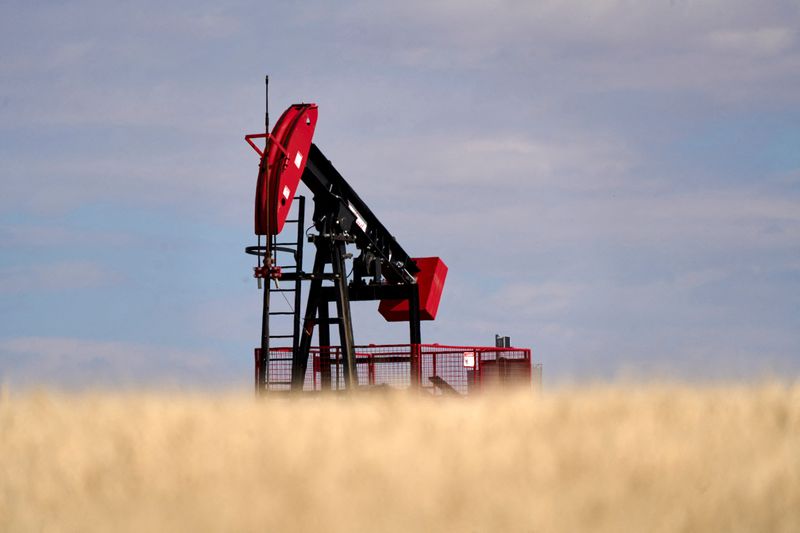Commodities
Oil set for weekly gains on colder weather, Chinese policy support

By Enes Tunagur
LONDON (Reuters) -Oil prices held steady on Friday, remaining poised for weekly gains after closing the previous session at their highest in more than two months, underpinned by colder European and U.S. weather and additional economic stimulus flagged by China.
futures were down 9 cents at $75.84 a barrel by 1212 GMT after settling on Thursday at the highest level since Oct. 25. U.S. West Texas Intermediate crude dipped by 6 cents to $73.07, with Thursday’s close its highest since Oct. 14.
Brent was on track for a 2.2% weekly gain while WTI was set for a 3.5% increase.
Signs of Chinese economic fragility heightened expectations of policy measures to boost growth in the world’s top oil importer.
“As China’s economic trajectory is poised to play a pivotal role in 2025, hopes are pinned on government stimulus measures to drive increased consumption and bolster oil demand growth in the months ahead,” said StoneX analyst Alex Hodes.
China announced a couple of new measures to boost growth for its fragile economy this week with a surprise move to raise wages for government workers and announcement of a sharp increase in funding from ultra-long treasury bonds. The additional funding is to be used to spur business investment and consumer-boosting initiatives.
Oil is likely to have gained some price support from expected increased demand for after forecasts for colder weather in some regions.
“Oil demand is likely benefiting from cold temperatures across Europe and the U.S.,” said UBS analyst Giovanni Staunovo.

Also supporting prices this week, stockpiles dropped by 1.2 million barrels to 415.6 million barrels, EIA data showed.
Meanwhile, U.S. gasoline and distillate inventories jumped as refineries ramped up output, though fuel demand hit a two-year low.
Commodities
Oil prices rise; U.S. crude inventories plunge, Russia-Ukraine truce eyed
Commodities
India’s Reliance to stop buying Venezuelan oil over US tariffs, sources say
Commodities
Oil prices climb on Venezuela supply worries

 Forex3 years ago
Forex3 years agoForex Today: the dollar is gaining strength amid gloomy sentiment at the start of the Fed’s week

 Forex3 years ago
Forex3 years agoUnbiased review of Pocket Option broker

 Forex3 years ago
Forex3 years agoDollar to pound sterling exchange rate today: Pound plummeted to its lowest since 1985

 Forex3 years ago
Forex3 years agoHow is the Australian dollar doing today?

 Cryptocurrency3 years ago
Cryptocurrency3 years agoWhat happened in the crypto market – current events today

 World3 years ago
World3 years agoWhy are modern video games an art form?

 Commodities3 years ago
Commodities3 years agoCopper continues to fall in price on expectations of lower demand in China

 Economy3 years ago
Economy3 years agoCrude oil tankers double in price due to EU anti-Russian sanctions

























